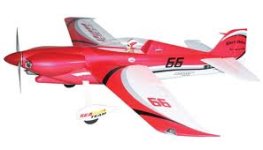Hi guys,
I have been charging lipos for 8 years now. Except 3 years ago I started charging 12S 15ah packs from a Thunder 1220 charger. This was a 300W 14S capable charger. I liked I could charge my 12S pack without any modifications.
The input shorted??? I tried turning it on one day and my power supply would not turn on (ATX 12V PSU). I tried with a 12V battery and the 30amp input fuse on the input side of the board blew. I replaced it and tried the charger again.
After about 5 seconds of the charger being ON with no load, the fuse blew again.
Just over a year ago I got a Hyperion 1420i which is 550W and also 14S capable. I was powering that one with 2 atx psu in series and I cut the gnd wire to one of them.
A week ago it did the same thing. Except this one has a 40amp input fuse that did not pop but my psu would not turn on. And connecting to a 18V battery (to turn the charger ON with no charging load) I almost melted the bullet connector.
This charger is capable of 28V input.
I just ordered a Thunder Power 1430C and I hope this is the last one I need to buy?!?
Could this be due to my psus?
Could it just be that those chargers don't like charging 12S?
They do get quite hot for over 1 hour when I charge.
Could they be repaired?
Thanks in advance!!
I have been charging lipos for 8 years now. Except 3 years ago I started charging 12S 15ah packs from a Thunder 1220 charger. This was a 300W 14S capable charger. I liked I could charge my 12S pack without any modifications.
The input shorted??? I tried turning it on one day and my power supply would not turn on (ATX 12V PSU). I tried with a 12V battery and the 30amp input fuse on the input side of the board blew. I replaced it and tried the charger again.
After about 5 seconds of the charger being ON with no load, the fuse blew again.
Just over a year ago I got a Hyperion 1420i which is 550W and also 14S capable. I was powering that one with 2 atx psu in series and I cut the gnd wire to one of them.
A week ago it did the same thing. Except this one has a 40amp input fuse that did not pop but my psu would not turn on. And connecting to a 18V battery (to turn the charger ON with no charging load) I almost melted the bullet connector.
This charger is capable of 28V input.
I just ordered a Thunder Power 1430C and I hope this is the last one I need to buy?!?
Could this be due to my psus?
Could it just be that those chargers don't like charging 12S?
They do get quite hot for over 1 hour when I charge.
Could they be repaired?
Thanks in advance!!


